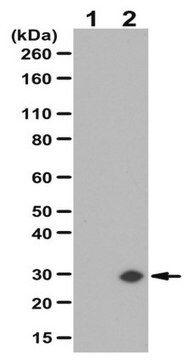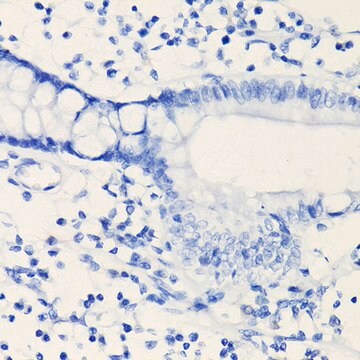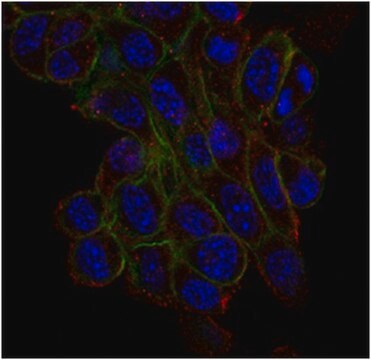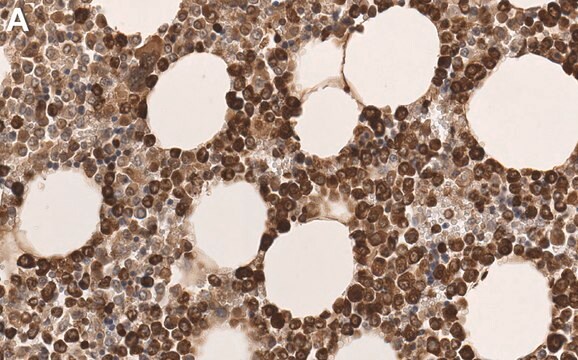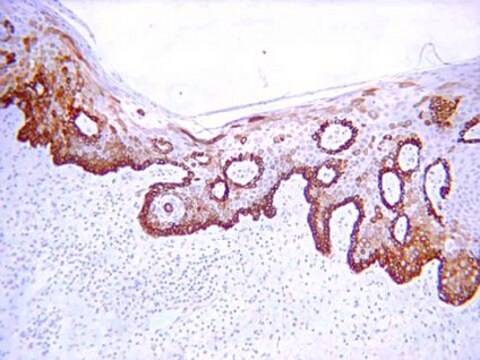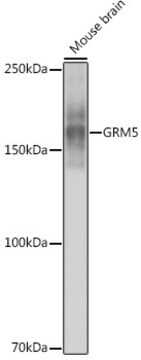SAB4200879
Anti-DDX6-Alexa488 antibody, Mouse monoclonal
clone DDX6-34, purified from hybridoma cell culture
Sinónimos:
ATP-dependent RNA helicase p54, DEAD box protein 6, HLR2, Oncogene RCK, Probable ATP-dependent RNA helicase DDX6
About This Item
Productos recomendados
conjugate
ALEXA FLUOR™ 488 conjugate
Quality Level
antibody form
purified from hybridoma cell culture
clone
DDX6-34
form
liquid
species reactivity
bovine, monkey, canine, human, mouse
concentration
1.5-2 mg/mL
isotype
IgG1
UniProt accession no.
shipped in
dry ice
storage temp.
−20°C
target post-translational modification
unmodified
General description
Specificity
Application
Biochem/physiol Actions
Viruses like Hepatitis C virus (HCV) or West Nile virus (WNV) utilize the host cell DDX6 to promote virus infection by recruiting it to the viral replication sites where it is involved in stabilization of the viral genome and the shift between translation and replication.2,5-6
DDX6 was reported to be overexpressed in colorectal adenocarcinomas, gastric cancer and in most malignant cell lines.7-9 It was suggested that DDX6 acted as an upstream cancerous enhancer through RNA-binding of HER2 and FGFR2 mRNAs that positively regulates post-transcriptional processes in cancer cells.7
Physical form
Storage and Stability
Legal Information
Disclaimer
Storage Class
12 - Non Combustible Liquids
wgk_germany
nwg
Elija entre una de las versiones más recientes:
Certificados de análisis (COA)
Lo sentimos, en este momento no disponemos de COAs para este producto en línea.
Si necesita más asistencia, póngase en contacto con Atención al cliente
¿Ya tiene este producto?
Encuentre la documentación para los productos que ha comprado recientemente en la Biblioteca de documentos.
Nuestro equipo de científicos tiene experiencia en todas las áreas de investigación: Ciencias de la vida, Ciencia de los materiales, Síntesis química, Cromatografía, Analítica y muchas otras.
Póngase en contacto con el Servicio técnico